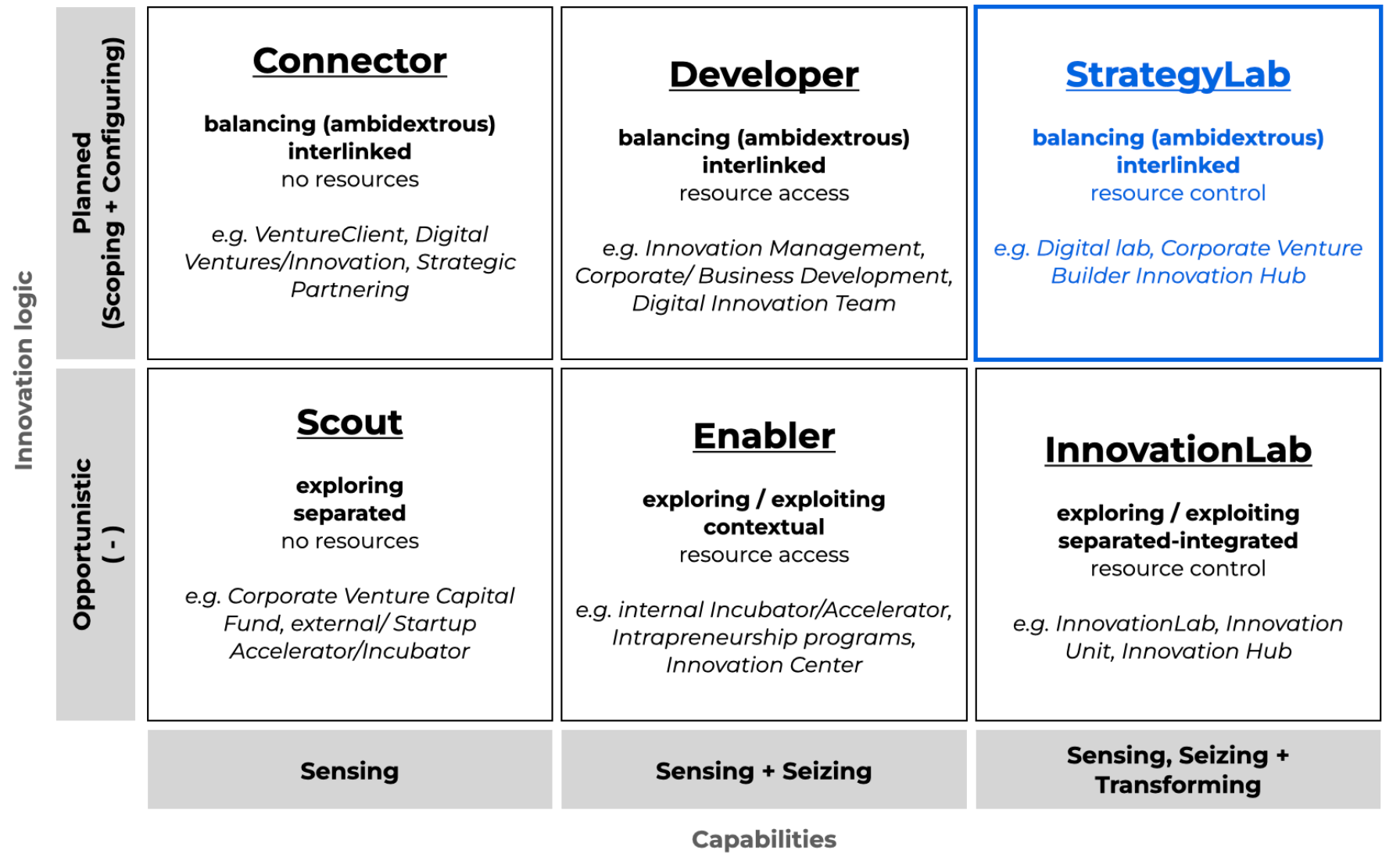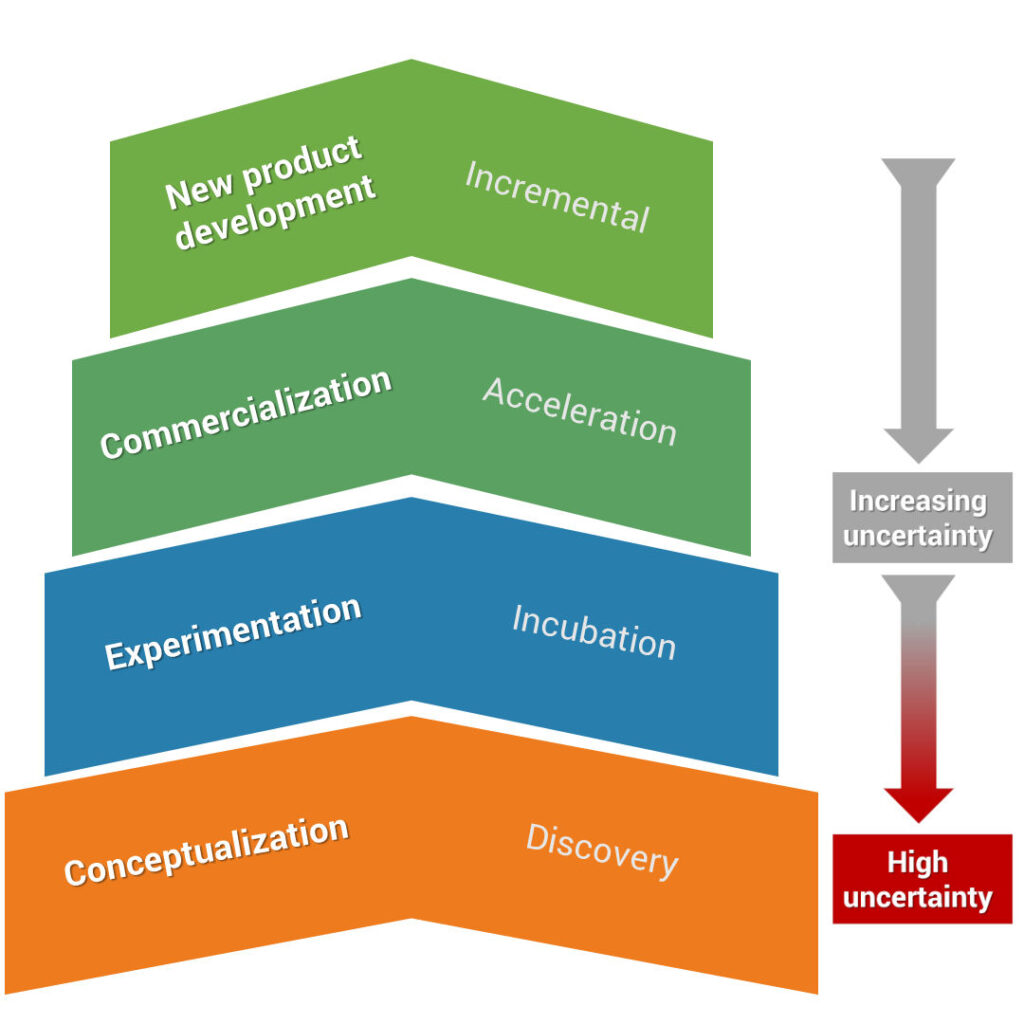To compete and survive companies must engage in the strategic renewal of their competitive advantages, says Professor Dr Lysander Weiss, of HHL Leipzig Graduate School of Management and co-author of a white paper “Strategic Innovation: Designing innovation units for strategic value contribution”. He proposes the concept of a Strategy Lab to establish and apply the required organizational capabilities for strategic innovation.
“In the past, a company’s new product development could be planned with some certainty,” explains Prof. Dr. Weiss. “Innovation was mostly an add-on to improve or extend the existing product portfolio. That has all changed.
“Now a continuous stream of strategically relevant new product/market combinations are required and innovation units must deliver new business.”
The rise of a separate Innovation Unit
In order to explore potential new opportunities for future business, while retaining and exploiting existing competitive benefits, companies need to become ambidextrous. There is increasing evidence that in order to do this successfully, companies need to rethink their innovation strategies.
Traditionally, R&D has either been integrated within product or market focussed units for exploitative new product development or separated out into Innovation Units that are focussed on radical or disruptive innovations.
However, these Innovation Units are often in a different geographic location to the headquarters, with their own flexible structure and staff, and so are not able to leverage the existing business capabilities. This limits the potential commercial success and scalability of resulting new ventures.
Despite this limitation, separate strategic units are set to increase.
A survey by Capgemini has revealed that while 69% of businesses in 2020 count integrated R&D and other comparable functions as their top sources of innovation, only 29% of those interviewed expect this to continue in 2025. In contrast, 71% of companies expect separate innovation units to be taking a leading role.
Dynamic capabilities vital to the success of the Innovation Unit
Prof. Dr. Weiss argues that in order to live up to expectations the Innovation Units must exhibit ‘processual ambidexterity’ and be able to engage in both exploration and exploitation. Empirical research by the independent consulting firm venture.idea has shown that innovation units can be differentiated by the five dynamic capabilities they possess – and which influence their strategic impact!
Five dynamic capabilities required for strategic innovation units with processual ambidexterity:
- Scoping – the ability to define the requirement and set strategic goals and criteria
- Configuring – the ability to reconfigure the innovation portfolio according to key performance indicators and allocate resources.
- Sensing – the ability to leverage internal strengths and weaknesses to derive new opportunities from environmental changes
- Seizing – the ability to develop new solutions in a customer-centric manner
- Transforming – the ability to implement solutions generating improvements in organisational performance.
What type of Innovation Lab?
Venture.idea has developed an innovation capability check tool to determine the relative strengths of these capabilities within an innovation unit and has been able to classify six different categories.
If the Innovation Unit is fully engaged in scoping and configuring then it is following a planned innovation logic; if not, it can be seen as opportunistic (the left axis). The bottom axis stratifies the capabilities.
Is a ‘Strategy Lab’ the solution?
An Innovation Unit that combines a planned innovation logic with all five capabilities – the ‘strategy lab’ – is best positioned to support strategic renewal.
In their White Paper, Prof. Dr. Weiss and his colleagues define seven key steps for developing a strategy lab and then three stages for its implementation. He comments that this blueprint can be used to develop a system to manage innovation throughout the organisation, improving the competitive position of the company and securing future profitable growth.
“A fully functional strategic innovation unit with a full set of dynamic capabilities provides a nucleus for driving innovation through the organisation. Other units can take the processes developed by this unit and the organisation will benefit from company-wide scoping and configuring capabilities to build a profitable and sustainable enterprise.”
The White Paper includes several industry case studies to show how companies have adapted and enhanced their innovation management systems to increase strategic impact from R&D and other innovation activities. You can read about the Schaeffler Group Case-study here: Schaeffler Group: Innovation to Business Strategy.










![An AbCellera scientist loads a sample to perform high-throughput screening. [credit: AbCellera]](https://www.rndtoday.co.uk/wp-content/uploads/2023/02/AbCellera-High-Throughput-Lab-Robot-2-1024x683.jpg)





